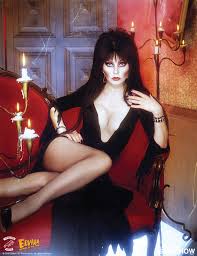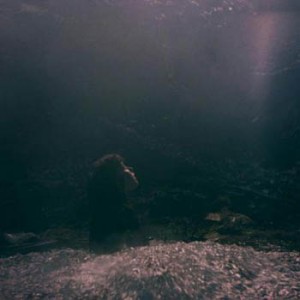Lost Cities by Zoe Chatfield
In April of 2015, I sat in a movie theater as I had done so many times before. Lights dim, trailers play, opening credits roll. But unlike times before, as I sat there, watching two characters – a boyfriend and a girlfriend – talk and flirt via Skype on screen, I heard my own voice playing out through the theater speakers. I am certainly not alone in the category of people who always find it a little odd to hear themselves in recordings (Is that really what I sound like?) And boy, is there a difference between hearing yourself talking in a video taken on an iPhone and hearing yourself sing through the giant speakers of a theater. It’s even more overwhelming when the song is one that you never wanted to share with people in the first place.
**
I am a part of a band with two friends that I’ve known since my freshman year of high school. We formed the summer after our senior year, and recorded 11 songs total (split into two releases) at the end of that summer and during our freshman year of college. We recorded “Lost Cities,” along with the other songs on a single microphone in the living room of a family friend’s illegal apartment in Hartford, Connecticut. (The apartment was in a building meant for businesses – the spaces for rent were intended as offices and studios. There were only shared bathrooms in the hall and he had rigged a shower in his kitchen that definitely wasn’t supposed to be there). I stood closest to the microphone, singing the melodies and the words I’d written. Emily stood a step or two behind me, singing harmonies, and Athena sat at a little Wurlitzer keyboard.
Some of the songs I was eager to share, happy with how they’d turned out. One was about my friend’s relationship with her boyfriend and how I thought they needed to break up. I liked it because I’d managed to use the ridiculous metaphor – and image – of someone wearing rainboots in a desert to talk about the state of their relationship in a way that I thought turned out to be pretty clever. It was also fun to sing, and we managed to write the song using only two chords on the piano without it sounding annoyingly repetitive. “Lost Cities” was also about love, but unlike my song about wearing rainboots in the desert, it was not one that I wanted to share. The song originated from a story familiar to many children of divorce: upset over a relationship that just needs to die already. Given the sensitive nature of the topic, and the fact that I was an eighteen year old still living at home, I was incredibly hesitant to perform it after putting music to it with the band. I was resistant to record it and put it online. It took debating and deliberating and a little bit of pressuring from peers. Finally, I gave in. We performed the song at gigs, we recorded it for our online release.
We uploaded the songs to Bandcamp with an album cover I (poorly) designed myself. It featured a picture I’d taken of my sister around the age of four, standing against a mural in New York City that consists of a tide of hearts dropping down from a helicopter like bombs. Besides promoting on our personal and band page on Facebook, we did nothing to announce the music to the world, and expected little to come of it – the songs were now out in the universe, for mostly just a few supportive family members and nice friends to listen to. Out of all the songs we recorded, this was the one I was most sensitive to, the only one I really didn’t care to “promote”. So of course, this song would become the one that now has over 1.5 million plays on Spotify, that has been heard by people in 58 countries around world. In essence, it seems to be the song that will never die. It continues to, fittingly, haunt the band. It definitely continues to haunt me.
To say the least – given the complete lack of professionalism both in our recording and promotional process – we never expected to be contacted about licensing our song to be in a movie. What’s more, when we first agreed to it, we didn’t know the details of the movie we were licensing the song to.
**
At this point, I think I should provide more information about the song. Each verse begins with the phrase “Lost cities, what a pity” and goes on about a failing romance; for example, “No one knows when it’s time to accept a lost love and say goodbye.” The chorus plays off of wedding vows – “Til death, til death, til death do we part. Til death, til death, til the death of this love.” Then, Emily sings “ooo’s” that emulate the sound of wedding bells.
**
We pondered over the type of movie and scene the song would be used for. None of us were particular fans of the romance genre, and assumed that that our song about love had landed somewhere in that realm. Probably something super cheesy. That was a guess we all agreed on. Some kind of break up scene. Or a couple getting into a big fight. Maybe one of them storms off, slamming the front door of a little apartment they share, as I sing – “destroy yourselves already, you’re halfway there….” Maybe a somber, lonely person is walking down the street as we sing – “don’t you see there’s no home, no home left for love here.”
I suppose we weren’t completely wrong in our guesses. There was a couple in the movie. And they did go through turmoil. However it came as a surprise (although looking back – we probably shouldn’t have been that surprised), that the song would actually be in a horror movie. (I guess “til death do we part” works better as literal than nuanced while playing in the background of some scene). The movie, Unfriended, originally debuted at a Canadian film festival before being picked up by Universal Pictures and re-released in theaters internationally about a year later. The movie takes place completely on computer screens (good for us – not only did the song play, but it showed the character opening it up on Spotify, our album cover and title sitting in the corner of the screen. This was particularly exciting for my little sister. She was seven at the time the movie came out in the United States and very proudly talked about how she was famous now. Don’t worry, we didn’t let her watch the film.) Six friends, including the couple I watched as I first heard myself subtly singing in the background, are on a joint Skype call when they start getting messages from a classmate who had killed herself the year before. You can probably fill in some of the blanks here… the ghost starts messing with them (the big game changer is that she’s using online platforms to communicate and haunt them). If you don’t want spoilers for this movie that’s been out for a few years now, don’t read the next sentence. Long story short, everyone periodically dies.
The last two people to die are the couple that start the movie off. In the beginning, they are flirting and happy. By the end, infidelity has been revealed. They’ve watched their other friends die in disturbing ways. “Lost Cities” plays twice in this one and a half hour time, in conjunction with the sad spiral their relationship takes. My songs about failing relationships and distaste for rom-coms may already be clues to a larger attitude of mine: an overall cynicism about romance. So it was definitely a little satisfying for the song to be a prelude for the scene when the couple in the movie dies. Much better than some normal break up scene when you know the couple will find each other again in the end. When you know there will be a happy ending. This had no happy ending. In that way, cheesy horror movies will always be more honest than cheesy romantic movies. Romance reveals our desires, our fantasies, what we wish our lives could be. Life rarely pans out to these dreams. Horror reveals our fears, our downfalls, the reality that we break under pressure, we regret mistakes when it’s far too late, that we are all imperfect people, and in this movie, bad people. It is more violent, more extreme, and at times, more otherworldly than our realities. But beneath the cheap scares, there is a truth. If I had to choose a genre for this song to appear in – this song that I had a fear of sharing at all – I’m glad it was horror.


